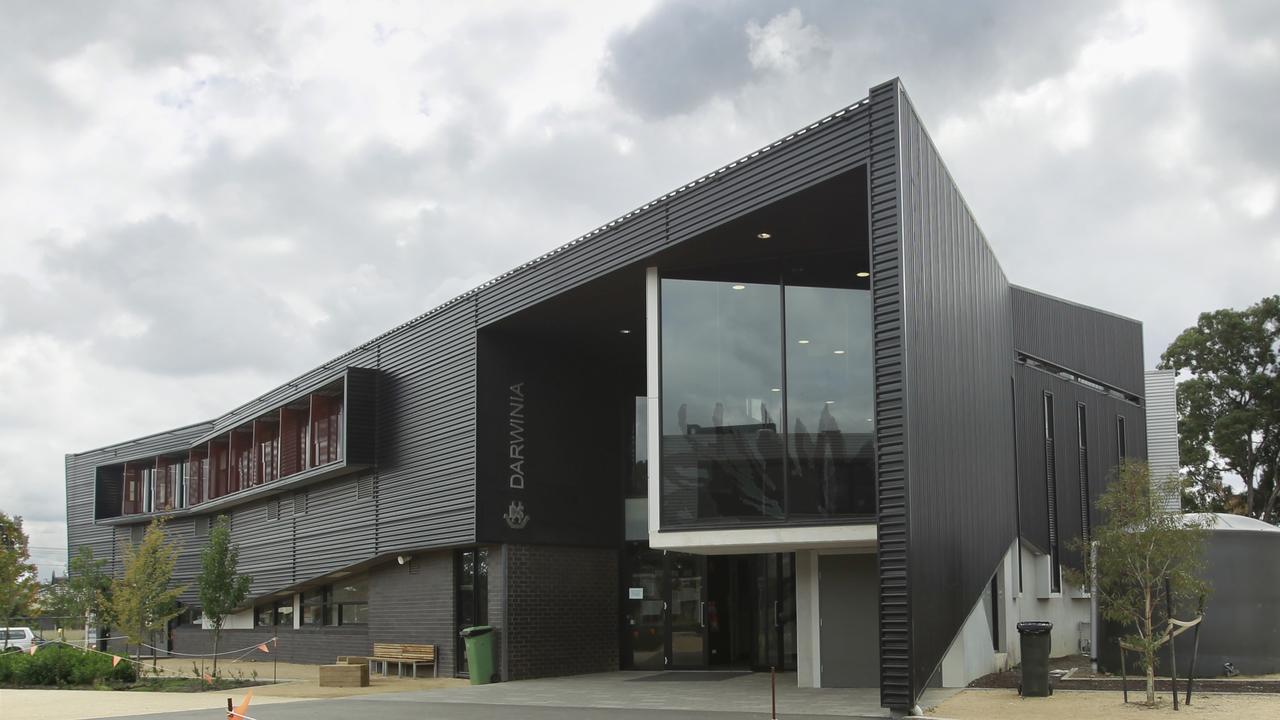Head lice: What to do if your child becomes a victim
How do you get rid of head lice? Just weeks into the school year and head lice are already driving mums (and dads) nits. Here’s what to do if your child becomes a victim.

Education
Don't miss out on the headlines from Education . Followed categories will be added to My News.
School is barely in and the dreaded nits notices are coming home.
Striking fear into the hearts of parents, the creepy crawlies don’t discriminate, seemingly able to withstand a nuclear attack.
Footy WAG Brooke Cotchin shared with her nearly 28,000 Instagram followers that her eldest child, who has just started kinder, was infested.
SHOCKING FOOTAGE OF MELBOURNE SCHOOL BRAWL
FRIGHTNING FACTS ABOUT HOW FEW CHILDREN CAN SWIM
TAKE THE YEAR 9 SELECT ENTRY TEST
The wife of Richmond captain Trent received knowing and sympathetic support from her followers, including a suggestion to put a drop of tea tree oil in shampoo and conditioner.
Head lice don’t discriminate between postcodes, private or government schools or clean or dirty hair.
They are transmitted by head-to-head contact and sharing hats and other items.
Itching is usually a sign but not every outbreak is accompanied by scratching.
While more prevalent at primary school level, it can be found in adults.
An inner-city secondary school sent out a note this week, warning parents there is an outbreak among Year 9 students.
Mummy bloggers and online forums are full of advice and recommendations for various brands or home remedies such as vinegar, Listerine, tea tree oil, olive oil and even dog soap.
Advantage Pharmacy Elsternwick said people turned to the clinic after they struggled to break the cycle.

Co-owner Lan Tran said they opened the clinic last February when they identified a need.
“People will use over the counter products but some strains of head lice can become resistant to the products,” Ms Lan said.
“They also struggle to remove all the eggs even though they are attempting to which means they can’t break the cycle.”
Ms Lan said people were usually at breaking point by the time they arrived at the clinic which uses a non-toxic heat treatment to dehydrate the nasties.
She said the clinic often treated mothers who had no one at home to treat them.
“If the child is an environment where they are getting lice regularly it is good idea to check on a weekly basis. It is so much easier to treat when you get it early in gestation cycle,” she said.
She suggests a good quality metal lice comb and regular checking.
“There are a lot of myths around head lice,” she said.
COULD YOU FACE GOING BACK TO SCHOOL?
The Victorian Education Department has set out a policy.
Visual checks of hair at school can be made without parental permission.
Inspections for head lice and eggs, in which the hair is touched, cannot be done without written consent from the parent/guardian.
These permission forms are usually part of the toolkit covering computer use and use of photographs.
They remain valid while the child is enrolled but a parent can revoke permission.
Schools may get volunteers to help with checking but they must sign a confidentiality agreement.
Students with identified live head lice will be given a note to take home to parents.
They can legally be excluded from school until the day after treatment has commenced.
However, the presence of eggs in the hair is not cause for exclusion, the policy states.
“The Department of Human Services indicates at any one time there are likely to be cases of head lice in most schools, so it is not advocated that the principal informs the whole school community each time head lice are detected “the education policy states.
While no one had died from head lice, constant scratching can cause disrupted sleep and irritability.
How to treat head lice
ROUTINELY check for lice or eggs in the hair.
IF found do not send a child to school with untreated head lice.
CHECK all family members and treat them.
NOTIFY the school.
USE a head lice lotion or shampoo, carefully following the instructions.
FOLLOW up treatment as recommended, usually seven days, as eggs take six to seven days to hatch.
NON-CHEMICAL option is to use a cheap conditioner and comb with a fine lice comb every two days until no live lice have been found for 10 days.
CONDITIONER will not kill them but will stun them so you can comb them out.
SEND child back to school a day after treatment commenced.
HEAD lice don’t fly and can’t jump because they don’t have knees but they crawl very fast.
KEEP hair tied up as head to head contact is how they are transmitted.
HEAD lice feed three to four times a day so once they are without blood will dehydrate in six hours in a dry climate and 24 hours in a humid climate.
THERE is no research to prove that therapies, herbal or chemical, can prevent lice.
HEAD lice may develop resistance to some chemicals so change it up.
AS head lice lives for a short time off the head, experts say washing the pillowslip, rather than all bedding, is recommended.
EDUCATE children about how lice are spread. Beware of selfies, sleepovers and sharing hats and combs.
Source: Victorian Health Department/Education Department.


